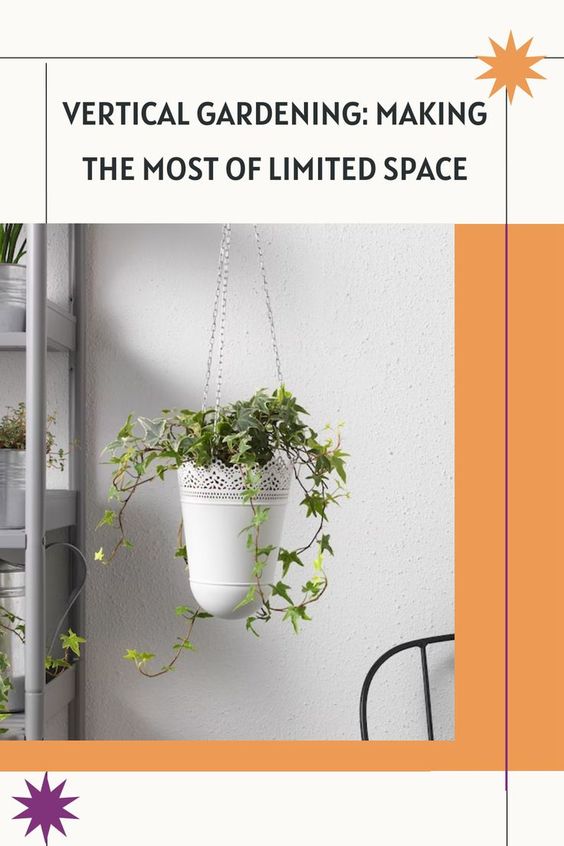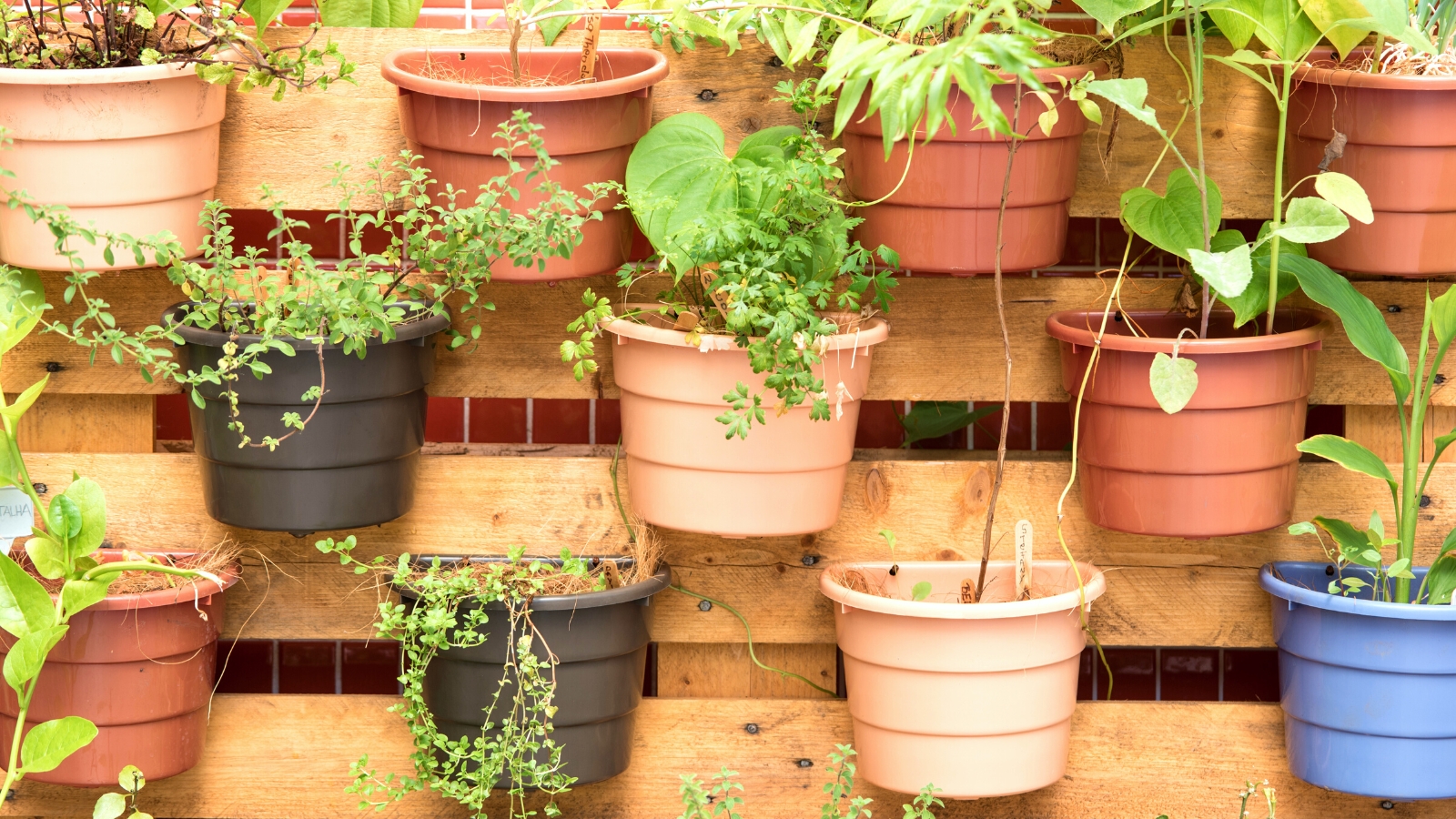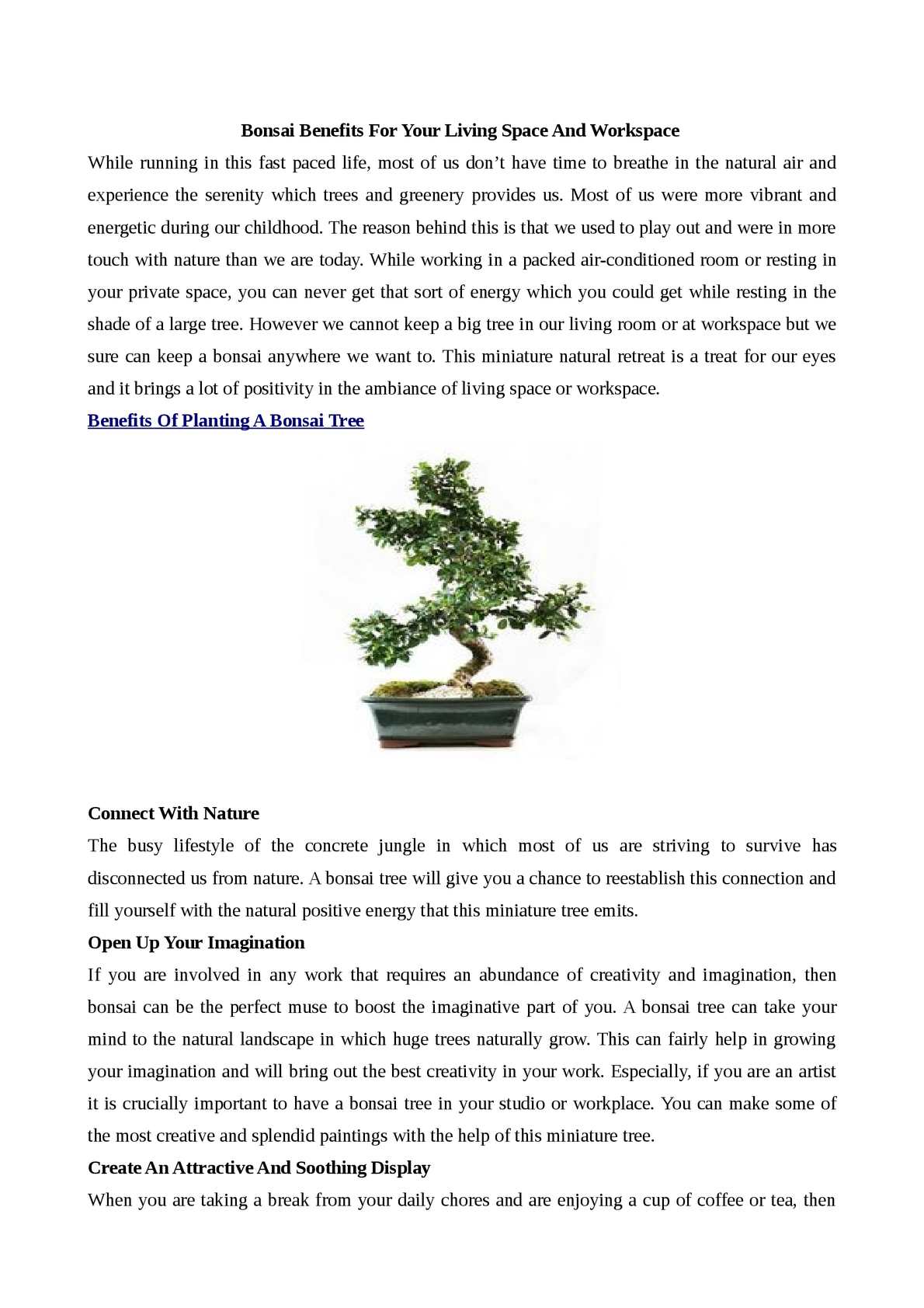Whether you live in a small apartment or have a tiny backyard, creating a flourishing garden might seem like an impossible task. However, with the concept of vertical gardening, you can maximize the use of limited spaces and transform even the smallest areas into lush green havens. Vertical gardening allows you to grow plants on walls, fences, or even suspended from the ceiling, utilizing vertical space to its fullest potential. In this article, we will explore the benefits and techniques of vertical gardening, offering you a creative solution to bring nature into your home or outdoor living area.
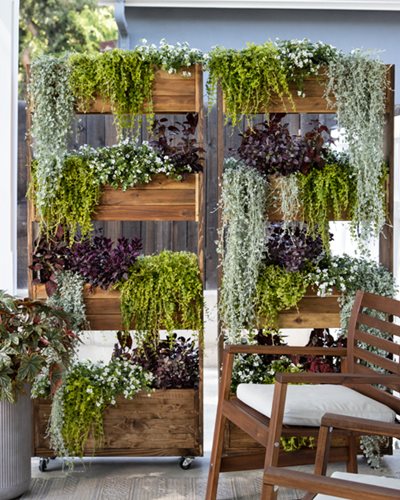
This image is property of www.gardendesign.com.
Why Choose Vertical Gardening?
Creative Use of Limited Space
Vertical gardening is an excellent solution for those with limited space. Whether you live in a small apartment or have a compact backyard, vertical gardening allows you to make the most of every available inch. By utilizing vertical surfaces such as walls, trellises, and arbors, you can create a stunning garden in even the tiniest of spaces.
Decorative and Aesthetic Appeal
Not only does vertical gardening provide a practical solution for limited space, it also adds beauty and aesthetic appeal to any environment. The upward growth of plants draws the eyes upwards, creating a visually striking display. Whether you choose vibrant flowers, cascading vines, or lush greenery, vertical gardens can transform any dull or cramped area into a vibrant oasis.
Easy Maintenance and Accessibility
One of the greatest advantages of vertical gardening is its ease of maintenance and accessibility. When plants are positioned vertically, it becomes easier to water, prune, and harvest them. No more bending or stooping down to tend to your plants. You can simply reach up or step a few inches away from the wall to care for your garden. This accessibility not only saves your back, but it also makes gardening a more enjoyable and hassle-free experience.
Selecting the Right Plants
Consider Light Requirements
When selecting plants for your vertical garden, it is crucial to consider their light requirements. Different plants have varying levels of sun exposure that they thrive in. Some plants prefer full sun, while others thrive in partial shade. Take into account the amount of sunlight your chosen location receives throughout the day. This will help you determine which plants will flourish in your vertical garden.
Choose Compact and Climbing Varieties
To make the most of your vertical gardening space, it is advisable to choose compact and climbing varieties of plants. Compact plants take up less space and are well-suited for vertical gardening structures such as hanging baskets and pots. Climbing plants, on the other hand, can be trained to grow upwards, utilizing walls and trellises. By selecting these types of plants, you can maximize the vertical space and create a lush and abundant garden.
Consider Watering and Drainage Needs
Another important factor to consider when selecting plants for your vertical garden is their watering and drainage needs. Some plants require more frequent watering, while others are more drought-tolerant. Ensure that your chosen plants have similar watering requirements to make maintenance easier. Additionally, consider the drainage capabilities of your vertical gardening structure. Proper drainage is essential to prevent root rot and waterlogged soil.
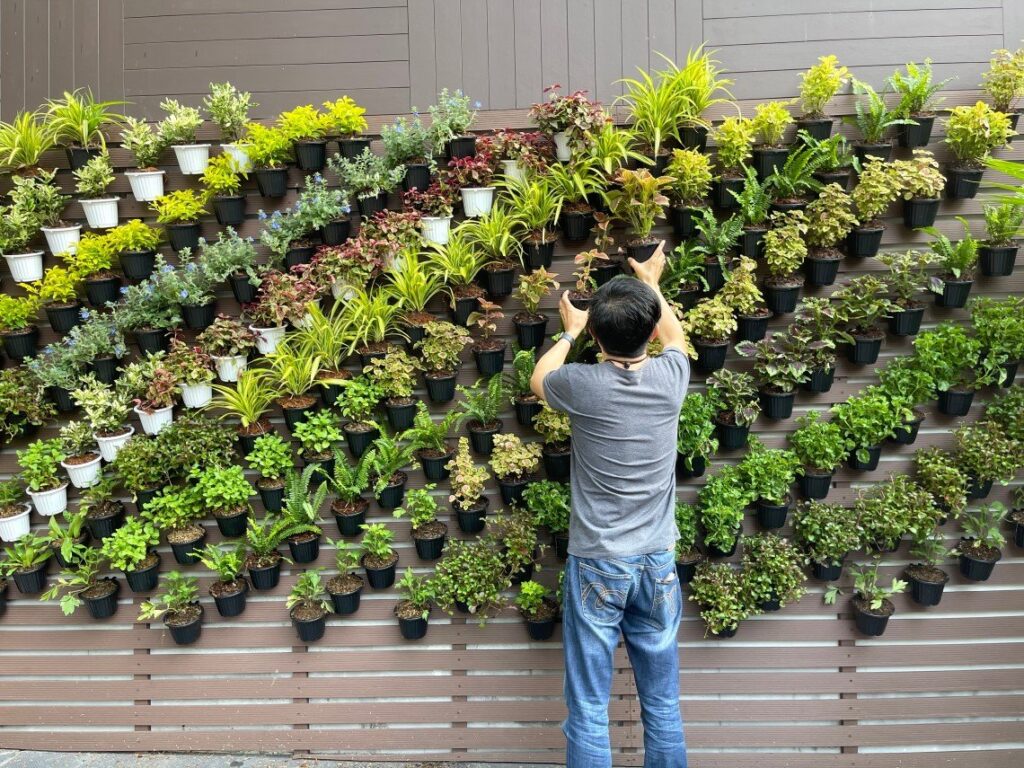
This image is property of www.gardenstead.com.
Structures and Systems for Vertical Gardening
Vertical Garden Wall
A vertical garden wall is a popular choice for those looking to create a striking focal point in their garden. This structure involves attaching a series of containers or pockets to a wall, allowing plants to grow outwards. It not only adds a unique aesthetic appeal but also maximizes space by utilizing vertical surfaces. Vertical garden walls can be made from a variety of materials such as wood, metal, or even recycled pallets.
Trellises and Arbors
Trellises and arbors are versatile structures that can be used to support climbing plants in a vertical garden. Trellises are typically made from a series of intersecting wooden or metal bars, forming a lattice-like pattern. They can be attached to walls or placed freestanding in the garden, providing support for climbing plants such as vines or roses. Arbors, on the other hand, are larger structures that create an archway or tunnel. They offer a visually pleasing entrance or pathway and provide a sturdy support for climbing plants.
Hanging Baskets and Pots
Hanging baskets and pots are a convenient and space-saving option for vertical gardening. They can be easily suspended from walls, balconies, or pergolas, adding a touch of greenery to any space. Hanging baskets and pots are available in a variety of shapes and sizes, allowing you to create a unique and personalized vertical garden. They are also easy to move and rearrange, giving you the flexibility to experiment with different designs and plant combinations.
Preparing Your Vertical Garden
Choosing the Right Location
Before setting up your vertical garden, it is essential to choose the right location. Consider factors such as sunlight exposure, wind patterns, and accessibility. Most plants require at least six hours of direct sunlight each day, so select a location that receives adequate sunlight. Additionally, be mindful of any obstacles that may block sunlight or create excessive shade. Wind can also impact the health and stability of your vertical garden, so choose a location that offers some protection. Lastly, ensure that the location is easily accessible for watering, pruning, and harvesting.
Preparing the Soil
Preparing the soil is an essential step in setting up your vertical garden. Start by removing any existing weeds or plants from the area. Loosen the soil with a garden fork or tiller and amend it with organic matter such as compost or aged manure. This will improve the soil structure and provide essential nutrients for your plants. Ensure that the soil is well-draining, as stagnant water can lead to root rot. If your chosen location has poor soil quality, consider using raised beds or containers filled with high-quality potting mix.
Installing Supports and Structures
Once you have chosen the location and prepared the soil, it’s time to install the supports and structures for your vertical garden. If you are using a vertical garden wall, attach the containers or pockets securely to the wall using screws or brackets. Make sure the structure is sturdy and can support the weight of the plants when fully grown. For trellises and arbors, position them in the desired location and secure them firmly into the ground. If using hanging baskets or pots, install hooks or brackets to hang them from walls or ceilings. Take care to ensure that all supports and structures are level and secure.
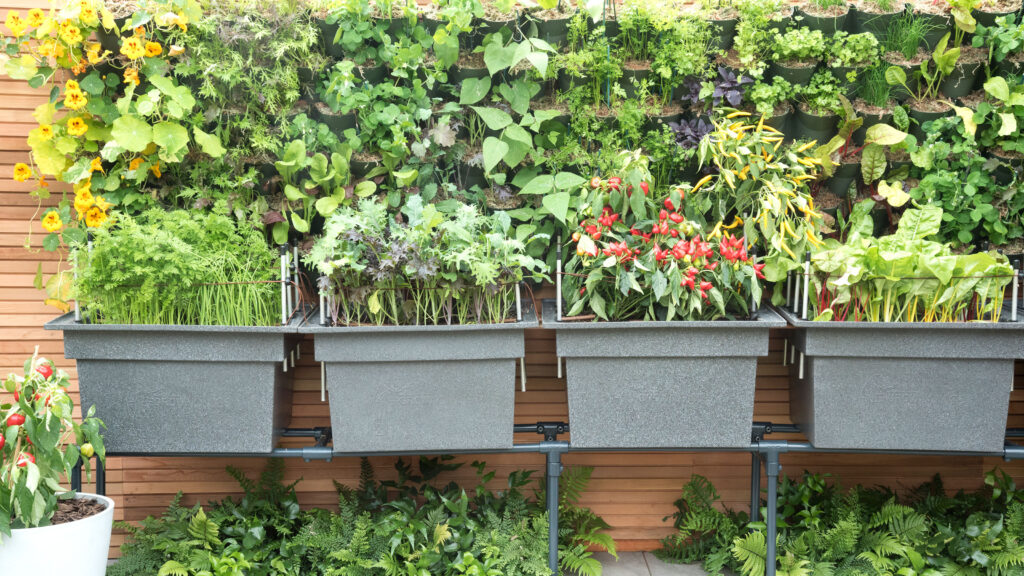
This image is property of cdn.mos.cms.futurecdn.net.
Planting and Care Tips for Vertical Gardens
Proper Plant Spacing
Proper plant spacing is crucial in vertical gardens to allow each plant to receive adequate sunlight, air circulation, and access to nutrients. Overcrowding can lead to competition for resources and increase the risk of pests and diseases. Follow the recommended spacing guidelines for each plant, taking into account their mature size. Regularly monitor your vertical garden and prune or remove any plants that may be overcrowded or overshadowing others.
Watering Techniques
Watering techniques in vertical gardens differ slightly from traditional gardens. The vertical orientation of plants can affect irrigation and drainage. Avoid overwatering by ensuring that the containers or pockets have proper drainage holes. Water slowly and deeply, allowing the water to penetrate the soil and reach the roots. Monitor the moisture levels regularly and adjust your watering schedule as needed. Remember that plants in vertical gardens may dry out more quickly due to increased exposure to sunlight and wind.
Fertilizing and Pruning
Fertilizing and pruning are important aspects of vertical garden maintenance. Use a balanced, slow-release fertilizer to provide essential nutrients to your plants. Follow the manufacturer’s instructions for application rates and frequency. Regular pruning is necessary to maintain the shape and size of your plants and prevent overcrowding. Remove any dead or diseased leaves and branches to promote healthy growth. Additionally, regular pruning encourages flowering and fruiting in appropriate plant species.
Vertical Garden Designs and Ideas
Container Vertical Garden
Container vertical gardens are a popular choice for those with limited space. They involve using various containers such as pots, buckets, or even recycled materials, and arranging them vertically. You can hang the containers on a wall, balcony railing, or use freestanding structures. Get creative with the containers and choose different sizes, shapes, and colors to create an eye-catching display. Fill them with a mix of flowers, herbs, or vegetables for a versatile and visually appealing vertical garden.
Green Wall with Pockets
A green wall with pockets is a unique and visually stunning vertical gardening idea. It involves creating a wall-mounted structure with pockets or pouches that hold the plants. These pockets can be made from a variety of materials such as felt, fabric, or even recycled plastic bottles. Arrange the pockets in a pattern or design of your choice and fill them with soil and plants. The result is a living wall that adds a touch of greenery and natural beauty to any space.
Pallet Vertical Garden
A pallet vertical garden is an innovative and budget-friendly option for vertical gardening. It involves repurposing wooden pallets as vertical planters. Start by cleaning and treating the pallet to prevent rot and decay. Stand the pallet upright and attach landscape fabric or plastic sheeting to the back and sides. Fill the spaces between the slats with soil and plant your chosen plants. Pallet vertical gardens can be leaned against a wall or secured to a fence, providing an attractive and functional display.
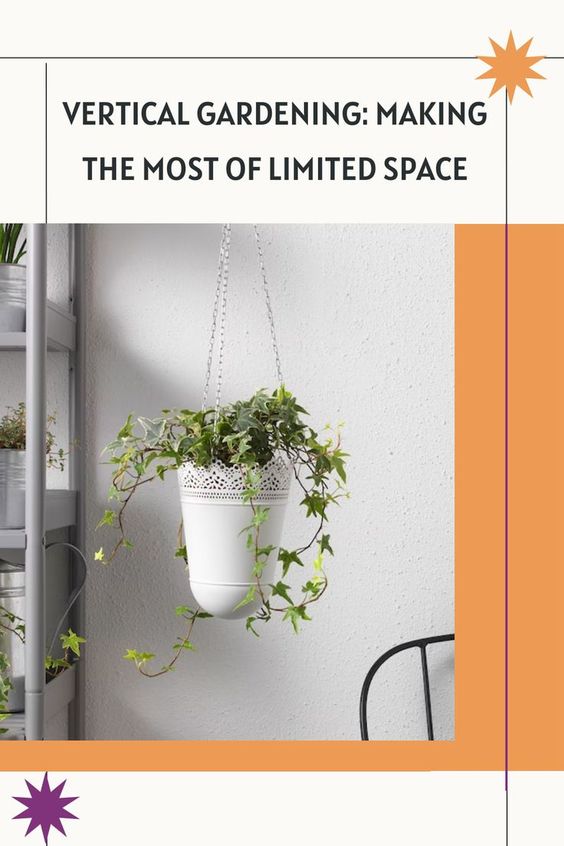
Vertical Gardening in Different Environments
Indoor Vertical Gardening
Vertical gardening is not limited to outdoor spaces. It can also be successfully implemented indoors, bringing greenery and freshness to your home. When considering indoor vertical gardening, take into account factors such as available sunlight, humidity levels, and the space available. Choose plants that thrive in indoor environments, such as pothos, spider plants, or herb varieties. You can create a living wall using a vertical garden system specifically designed for indoor use or opt for smaller-scale options like hanging baskets or wall-mounted containers.
Outdoor Vertical Gardening
Outdoor vertical gardening is ideal for those who have limited ground space but ample vertical surfaces available. Choose plants that are suited to your specific climate and environmental conditions. Consider factors such as sunlight exposure, wind protection, and water availability. Outdoor vertical gardens can transform balconies, patios, or even the side of a shed or garage into vibrant and thriving green spaces. Get creative with your structure choices and plant combinations to create a unique and personalized outdoor vertical garden.
Vertical Gardens in Urban Settings
Vertical gardening is an excellent option for urban settings where space is often at a premium. Balconies, rooftops, and even walls can be transformed into lush green spaces with the use of vertical garden structures. Urban vertical gardens not only provide a beautiful and calming environment but also contribute to improved air quality and temperature regulation. They offer a sense of nature and tranquility in the midst of a bustling city. Explore different vertical gardening ideas and solutions that suit your urban setting, whether it’s a small apartment balcony or a communal rooftop garden.
Potential Challenges and Solutions
Limited Soil and Nutrients
One of the main challenges of vertical gardening is the limited amount of soil and nutrients available for plant growth. To overcome this challenge, use high-quality potting soil or compost to provide essential nutrients to your plants. Consider adding slow-release fertilizers to ensure continuous nutrient supply. Additionally, implement a regular fertilization schedule to replenish nutrients that may be leached out by frequent watering. You can also experiment with vertical garden systems that incorporate built-in reservoirs for water and nutrient retention.
Lack of Sunlight
Limited sunlight can pose a challenge for vertical gardens, especially in shaded or indoor environments. To work around this challenge, choose shade-tolerant plants that can thrive with less direct sunlight. Opt for plants with colorful foliage or those specifically bred for low-light conditions. Consider supplementing natural light with artificial lighting solutions such as grow lights or full-spectrum bulbs. Position the plants in areas that receive the maximum amount of available sunlight, or provide reflective surfaces to bounce the light onto the plants.
Pest and Disease Management
Vertical gardens are not immune to pests and diseases. In fact, the upward growth of plants can sometimes make them more susceptible to certain pests, such as aphids or spider mites. To manage pests and diseases, implement proper garden hygiene practices, such as removing dead leaves and debris regularly. Monitor your plants closely for any signs of infestation or disease and take prompt action. Encourage beneficial insects such as ladybugs or lacewings that prey on garden pests, or consider using organic pest control methods such as neem oil or insecticidal soaps.
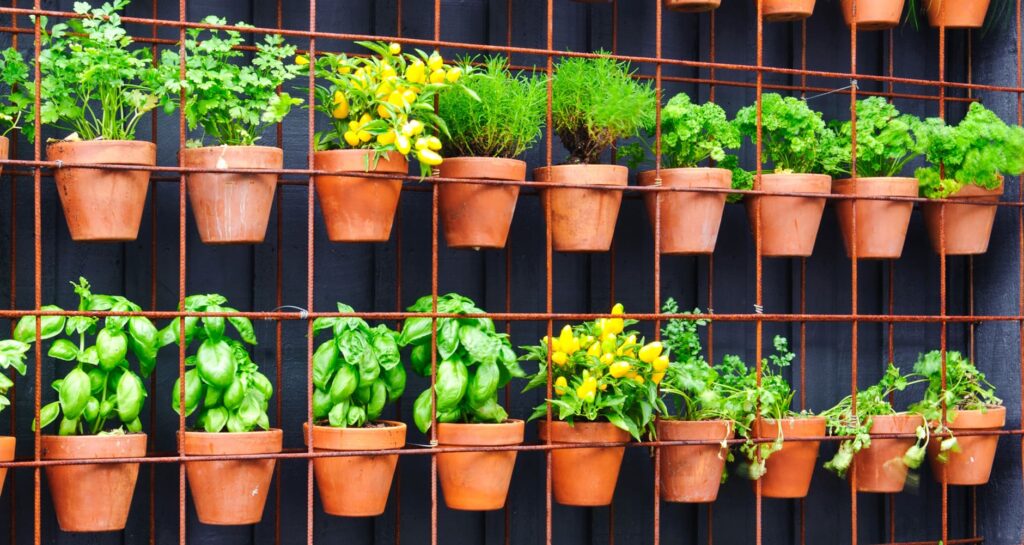
This image is property of www.farmersalmanac.com.
Tips for Maximizing Productivity and Yield
Succession Planting
Succession planting is a technique that involves planting different crops in the same space to maximize productivity and extend the harvest season. In a vertical garden, succession planting can be implemented by planting fast-growing crops that reach maturity quickly, followed by slower-growing varieties. This allows you to continually harvest fresh produce and make the most of your vertical gardening space throughout the growing season.
Companion Planting
Companion planting is a strategy that involves planting compatible crops and beneficial plants in close proximity to maximize yield, deter pests, and enhance overall plant health. In a vertical garden, companion planting can be utilized to optimize space and create a thriving ecosystem. For example, planting flowers alongside vegetables can attract pollinators, while growing herbs alongside certain vegetables can deter pests. Take the time to research compatible plant combinations and experiment with companion planting in your vertical garden.
Utilizing Vertical Space Efficiently
To maximize productivity and yield in your vertical garden, make efficient use of the available vertical space. Train climbing plants upwards using trellises, walls, or arbors. Stack containers or hanging baskets to take advantage of vertical dimensions. Consider using vertical planting structures that allow for multiple layers, such as modular vertical garden systems or tiered shelves. By utilizing every inch of vertical space, you can increase the number of plants you can grow and optimize the productivity of your vertical garden.
Conclusion
Vertical gardening is a fantastic choice for those looking to make the most of limited spaces. It offers creative solutions, decorative appeal, and easy maintenance. By carefully selecting the right plants, structures, and systems, you can create a stunning vertical garden that suits your environment and personal style. With proper preparation, planting, and maintenance techniques, you can overcome potential challenges and maximize the productivity and yield of your vertical garden. So why wait? Start exploring the world of vertical gardening and transform your limited space into a thriving oasis of greenery and beauty.


